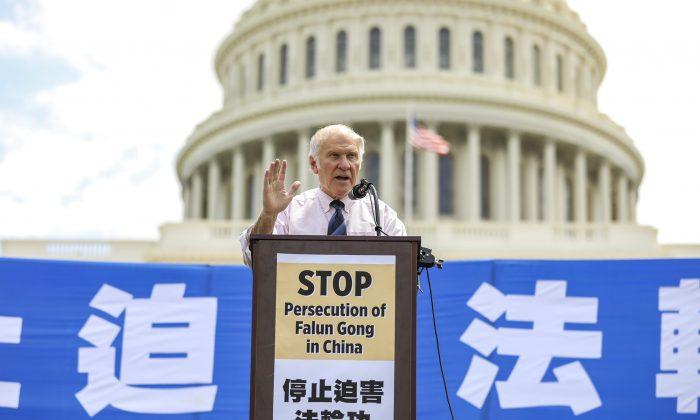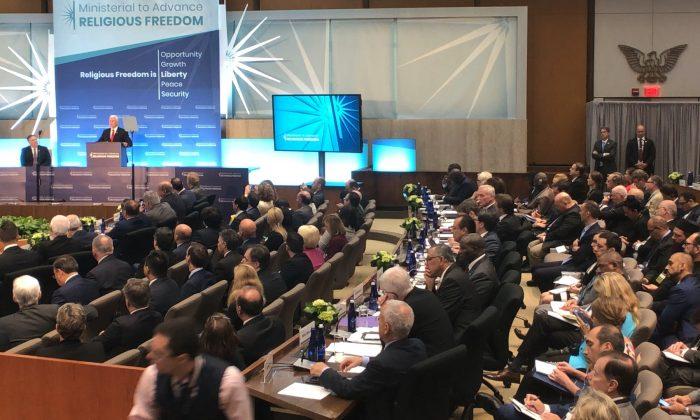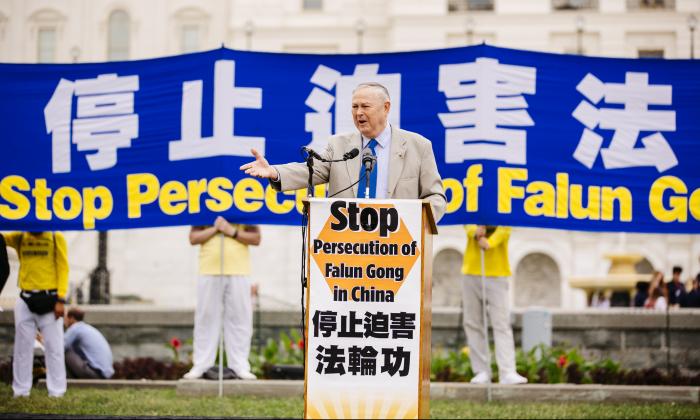WASHINGTON—As the 10th anniversary of the al-Qaeda attack of Sept. 11, 2001, approaches, it may be a good time to examine how effective the United States has been in repelling terrorist attacks. The United States has not succumbed to another catastrophic attack like 9/11, although several attacks have been attempted and at least three have been successful, such as the Fort Hood shooting in 2009, in which 13 people were killed.
Under the Obama administration, the mission has often been stated: to disrupt, degrade, dismantle, and defeat al-Qaeda and its affiliates and adherents. Much has been accomplished. The federal government has made progress in breaking down barriers between intelligence gathering entities, and cooperation has increased between federal, state, and local law enforcement. In the Afghanistan-Pakistan region, al-Qaeda has been on the run. Its only leader, Osama bin Laden, was slain in an April 29 raid, and much of its top leadership has been killed by special forces predatory drone attacks.
“The number of al-Qaeda operatives in Afghanistan and Pakistan combined has shrunk from the level in 2001, when it was probably over 1,000,” wrote Seth G. Jones, senior political scientist at RAND and a former representative for the commander of U.S. Special Operations Command.
In May, Gen. David Petraeus estimated that only 50 to 100 al-Qaeda fighters move back and forth in eastern Afghanistan.
“U.S. efforts have disrupted al-Qaeda’s command and control, communications, morale, freedom of movement, and fundraising,” said Jones.
As a result of al-Qaeda weakening, it has not had a successful terrorist attack in the West since July 2005, when four suicide bombers staged devastating attacks in London, killing 56 people and injuring more than 700 others. Al-Qaeda has repeatedly tried and failed to conduct a follow-on attack in the United States, according to Jones.
Despite American successes in putting al-Qaeda on the defensive, it continues to pose a significant threat to the United States. According to the 2011 “National Strategy for Counterterrorism,” an official U.S. document signed by the President Obama last June, al-Qaeda’s ideology resonates with many individuals who “accept al-Qaeda’s agenda, whether through formal alliance, loose affiliation, or mere inspiration. Affiliated movements have taken root far beyond al-Qaeda’s core leadership in Afghanistan and Pakistan.”
Al-Qaeda Threat Shifting
The National Strategy document notes a shift in al-Qaeda strategy:
“In recent years the source of the threat to the United States and its allies has shifted in part toward the periphery—to groups affiliated with but separate from the core of the group in Pakistan and Afghanistan. This also includes deliberate efforts by al-Qaeda to inspire individuals within the United States to conduct attacks on their own.”
Homegrown terrorism has become the dominant face of terrorism in the United States now, as al-Qaeda is being suppressed.
The Heritage Foundation, a conservative think tank in Washington, D.C., has been tracking foiled terror plots since 2007. Using public data and the RAND Database of Worldwide Terrorism Incidents, Heritage researchers Jena Baker McNeill, Dr. James Carafano, and Jessica Zuckerman compiled 39 foiled terror plots since 9/11, which are listed in a Heritage “Backgrounder,” May 20.
Some terrorists attacking the United States are American citizens, unlike the 9/11 attackers.
In September 2002, six American citizens of Yemen descent, five of whom were born in Lackawanna, N.Y., were arrested for conspiring with terrorist groups after attending an al-Qaeda training camp. They pleaded guilty to providing support to al-Qaeda.
Anwar al-Awlaki, born in New Mexico, an American Muslim cleric believed to be hiding somewhere in Yemen, has emerged as one of al-Qaeda’s most influential figures. Speaking excellent English, he uses the Internet to recruit followers to commit violent jihad against the United States. It is known that he had private meetings with two of the 9/11 attackers. Even though he is an American citizen, the Obama administration has authorized the targeted killing of al-Awlaki, according to the NY Times.
Al-Awlaki is linked by e-mail exchanges with Maj. Nidal Malik Hasan, the Army psychiatrist accused of the shooting spree at Fort Hood, Texas, in November 2009 and to Umar Farouk Abdulmutallab, the Nigerian man charged with trying to blow up a Detroit-bound airliner in December 2010. Abdulmutallab is commonly called the underwear bomber or the Christmas Day bomber.
In 1 of the 39 foiled attempted attacks the Heritage Foundationlisted, American citizen Paul G. Rockwood Jr., became a follower of al-Awlaki in July 2010 and came to believe he had to seek revenge and kill those whom he believed defiled Islam. Caught lying to the FBI, he was sentenced to eight years.
The same NY Times article reported that Faisal Shahzad, Pakistani-American man accused of trying to detonate a car bomb in Times Square, said al-Awlaki inspired him. Awlaki denies responsibility for planning or enabling any terrorist attacks.

Terror Attacks by the Numbers
Using the RAND database cited above, Heritage Foundation researchers analyzed the 91 homegrown domestic terrorist incidents between 2001 and 2009. More than one-third (33) of the attacks occurred in 2001, and since then, the number of attack attempts has declined.
The number of deaths from international terrorism from 2001–2009 is 879 when the 9/11 attacks are excluded. Only eight people died from domestic terrorism in that period.
Most terrorist attacks against the United States during this period were international, totaling 380. International terrorists favor bombings (68.3 percent) as their method, while arson is used in nearly half (46.2 percent) of attacks by domestic terrorists.
Some Lessons Learned
The heritage researchers concluded that training camps are a major tool for the terrorists. Of the 39 plots since 9/11, at least 23 involved individuals attending or attempting to attend terrorist training camps, who made contact with terrorist organization affiliates overseas. Such training camps exist in Latin America, Pakistan, and around Yemen, to mention a few locations.
The camps, really safe havens, offer a means to expand operations: recruitment, fundraising, and training. As terrorism directed at the United States has an international dimension, there is a need for greater cooperation and information sharing between the United States and other nations, say the heritage researchers.
Of the 39 foiled plots, alert everyday citizens stopped three. Bystanders told police about suspicious behavior when Faisal Shahzad tried to detonate explosives in an SUV parked in Times Square in May 2010. The public has a role in preventing terror attacks, but the think tank researchers say it shouldn’t be the first line of defense as it was in these three cases.
A third lesson drawn by the heritage researchers is that current aviation security is both costly and inconsequential. None of the foiled plots was stopped because of physical security measures at U.S. airports, according to the Backgrounder. Congress continues to pour billions of dollars into Transportation Security Administration (TSA) screening lines.
The Christmas Day bomb attempt led TSA to adopt the unpopular choice of a full-body scan or a physical pat down by a TSA agent. The authors say the TSA drew the wrong conclusion from its failure to detect Abdulmutallab. His father went to a U.S. Consulate office to warn of his son’s plans. This intelligence should have been used to revoke Abdulmutallab’s visa. The National Counterterrorism Center should have placed him on a no-fly list. Better information sharing and intelligence is key here. The State Department and Homeland Security should have coordinated better.
One lesson from the past decade is not to underestimate the human aspiration for freedom. The peaceful protests beginning in 2011 in Tunisia and Egypt, led by disaffected youth, dealt a crushing blow to groups like al-Qaeda, who advocate violence to bring about change.
“The popular toppling of two long-despised rulers and, most importantly, the U.S. support for the aspirations of the Tunisian and Egyptian people undermined two of al-Qaeda’s most potent arguments. The first was that authoritarian rulers in the Middle East would never be ejected by peaceful means and that the only viable strategy was armed jihad against either the regimes themselves or their principal patron, the United States,” wrote RAND Senior Policy Analyst Frederic Wehrey, who served as an adviser to the Multi-National Force–Iraq in 2008.
The second al-Qaeda assumption was that the United States would side with the tyrants against the wishes of the people, he says. But the United States chose human rights and vigorously opposed the killing of peaceful protesters. On both counts, al-Qaeda’s position was proven wrong.





Friends Read Free